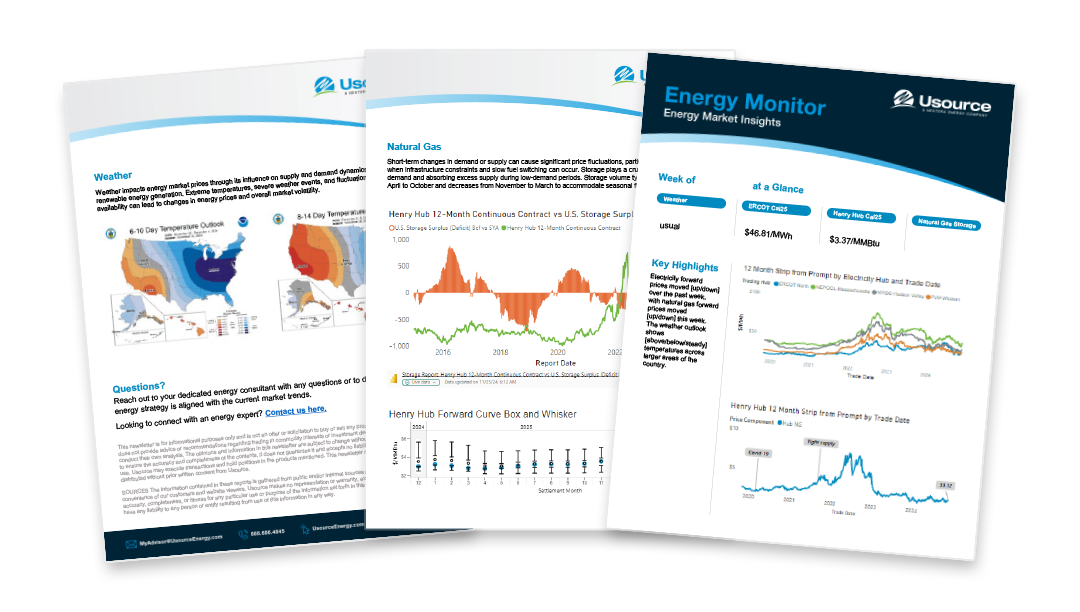Innovative energy procurement strategies
for cost reduction and risk mitigation
Effective energy procurement is becoming more complex as new laws are issued and new energy sources come in to play. Each of these procurement strategies hedges against inherent uncertainties; each carries a different type of risk. Whether you are purchasing traditional grid power, certified carbon-free power or power from a variety of renewable resources, any of these energy procurement strategies can be successfully employed, albeit in slightly different ways depending on the source of your power purchase.
Customizing your energy strategy
Usource’s proprietary technology, coupled with our deep market expertise, allows us to secure the best pricing and terms available for our wide range of industrial, commercial, and institutional customers. As a Usource client, you receive real-time market intelligence, gathered and interpreted by a dedicated team of experts whose primary focus is to help you execute on the best energy buying strategy for your business.

ENERGY UPDATES SENT TO YOUR INBOX
With our industry reports, you have access to the latest market movements and weather forecasts. Simply complete and submit the form to receive our next Market Update.

Hedging strategies
Each of these pricing strategies hedges against inherent uncertainties and each carries a different type of risk. Usource guides clients safely through these important steps.
Most commercial energy buyers are familiar with fixed-price energy contracts. You pay fixed-price energy rates for a defined period of time. This energy procurement strategy works best for businesses that require price certainty and budgetary control. 100% of the supply cost risk is on the supplier.
With a traditional block and index energy strategy, you can capture a fixed price, or “block”, during the contract term and any energy used above the block is billed at the index market rate. You can execute a block when you secure your initial energy supply contract or you can be initially billed 100% index and execute blocks in the future. These contracts are best for organizations with a predictable, steady base load.
Although it is impossible to predict exactly how much energy you will use at any given time, you can use your load shape (energy usage pattern) as a guide to hedging. If your organization doesn’t have a predictable baseload, a load-following block product may be a better fit for you. Load-Following Block and Index allows you to hedge a certain percentage of your energy usage despite volumes that fluctuate over time. Best for an organization that does not use a steady baseload of energy year-round. Although you may pay a price premium over a traditional block strategy, you will still be able to fix a portion of your usage while leaving yourself open to market buying opportunities.
For the greatest flexibility to react to market events, you can choose an active, managed hedging approach. With this plan, you can establish price and time-based triggers to execute hedges. Managed hedging allows you to lock in varying blocks of energy at different times over the course of multiple years. This is a forward-looking approach, allowing you to build into a fixed price with a more certain budget.



Strategic Energy Buying Saves Manufacturer $190k
Experiencing rapid growth carries its own set of unique challenges. The client’s CFO and Plant Engineer were not just focused on growth, but profitable growth. For Usource, this translated into finding a way to drive energy costs down in a market that has experienced significant upward pricing pressures.


